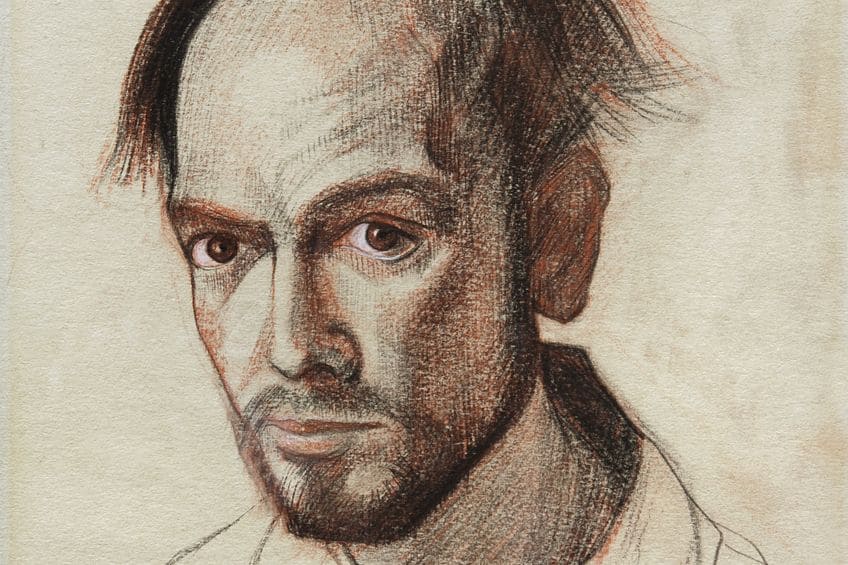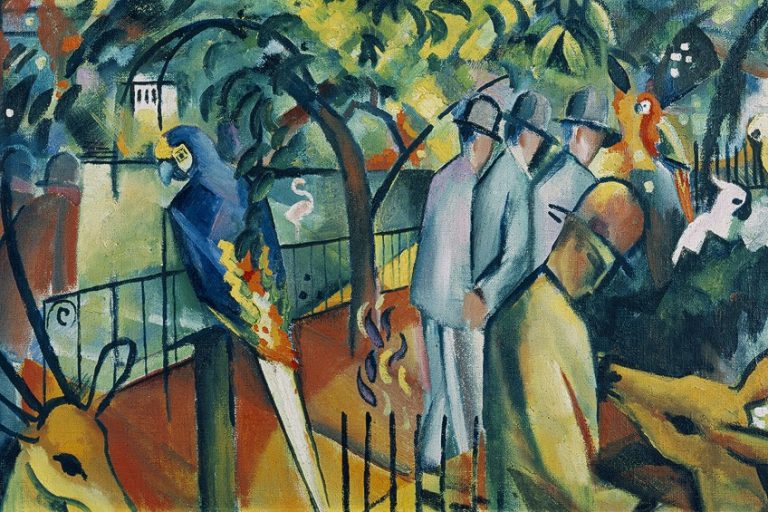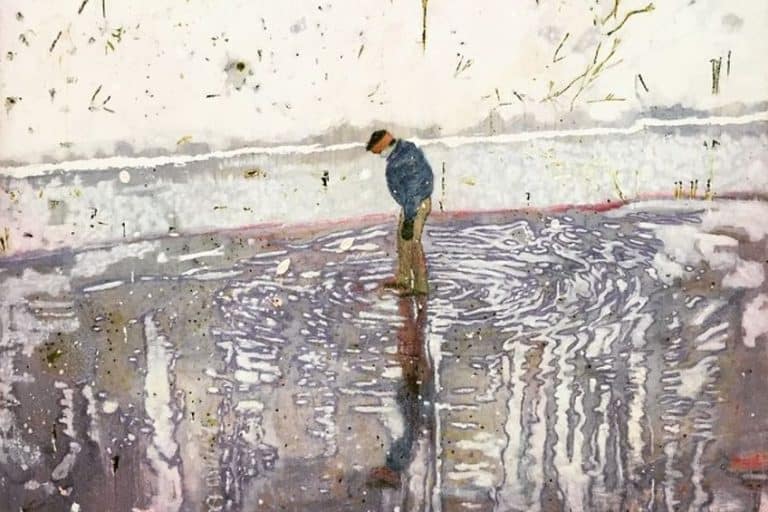William Utermohlen Self-Portraits – Tracing Alzheimers Through Art
William Utermohlen, a profound artist renowned for his captivating self-portraits, navigated the complexities of identity and memory through his evocative works. Born in 1933, Utermohlen’s artistic journey took a poignant turn when he was diagnosed with Alzheimer’s disease in the mid-1990s. His subsequent series of self-portraits chronicled the gradual erosion of self-awareness and cognition, offering a deeply personal exploration of the human condition and the inexorable passage of time. Through his masterful use of color, form, and introspective gaze, Utermohlen invited viewers into an intimate dialogue about the fragility of memory and the enduring power of artistic expression.
Who Was William Utermohlen?
William Utermohlen (1933 – 2007) was a talented American artist known for his deeply introspective works, particularly his series of self-portraits. Born in Philadelphia, Utermohlen studied art in London and Italy, where he honed his skills and developed a unique style characterized by emotional depth and expressive brushwork. In the mid-1990s, Utermohlen was diagnosed with Alzheimer’s disease, a diagnosis that profoundly influenced his later work. His self-portraits documented the progression of his illness, offering viewers a raw and unflinching glimpse into the effects of memory loss and cognitive decline. Utermohlen’s art continues to provoke thought and conversation about the human experience and the intersection of art and illness.

In addition to his self-portraits, William Utermohlen’s body of work encompassed a wide range of subjects and mediums, including landscapes, still lifes, and figurative paintings. His art often explored themes of identity, mortality, and the passage of time, reflecting a deep engagement with existential questions. Utermohlen’s evocative use of color and texture, combined with his introspective approach, imbued his paintings with a sense of emotional resonance that resonated deeply with viewers.
Despite the challenges posed by his illness, Utermohlen continued to create art until his passing in 2007, leaving behind a legacy that speaks to the enduring power of creativity in the face of adversity.
Top Self-Portraits to Know
Among William Utermohlen’s most compelling self-portraits are those that vividly capture the progression of his battle with Alzheimer’s disease, showcasing the artist’s poignant introspection and emotional depth. Each brushstroke in these works reflects a profound struggle with memory and identity, inviting viewers into an intimate dialogue about the human condition. In the following list, we will explore some of Utermohlen’s most renowned self-portraits, each offering a poignant glimpse into the artist’s courageous confrontation with his own mortality and the inexorable passage of time.

Self-Portrait with Squint (1967)
| Date | 1967 |
| Medium | Oil on canvas |
| Dimensions | Not specified |
Utermohlen’s Self-Portrait with Squint captures a moment of introspection and vulnerability. The squinting of the eyes suggests a deep contemplation or perhaps a struggle with vision.
He is inviting viewers to ponder the internal landscape of the artist’s mind.
Self Portrait (1967)
| Date | 1967 |
| Medium | Mixed Media on Paper |
| Dimensions | Not specified |
An early portrait, this artwork was created before the ravages of Alzheimer’s took over. Although this portrait predates Utermohlen’s disintegration of self and identity, there is something about the eyes that hints at the suffering to come. Perhaps he was already starting to feel the effects of the disease that would engulf him in just over 10 years.

Self-Portrait with Dark Glasses (1973)
| Date | 1973 |
| Medium | Oil on canvas |
| Dimensions | Not specified |
In Self-Portrait with Dark Glasses, Utermohlen employs the motif of sunglasses to obscure his eyes, hinting at hidden emotions or shielding himself from scrutiny. The use of dark tones and the direct gaze convey a sense of mystery and introspection.
In this way, he is prompting viewers to question what lies behind the facade.
Self-Portrait in Profile (1984)
| Date | 1984 |
| Medium | Oil on canvas |
| Dimensions | Not specified |
This profile self-portrait offers a glimpse into Utermohlen’s contemplative nature. The simplicity of the composition draws attention to the artist’s silhouette, emphasizing his thoughtful presence within the frame. The profile view suggests a sense of introspection and self-awareness. He is inviting viewers to consider the artist’s inner world.
Self-Portrait in Blue Shirt (1990)
| Date | 1990 |
| Medium | Oil on canvas |
| Dimensions | Not specified |
Utermohlen’s Self-Portrait in Blue Shirt exudes a quiet dignity and serenity. The choice of a blue shirt and the calm expression on the artist’s face evoke a sense of tranquility and introspection.
The subtle play of light and shadow adds depth to the composition, inviting viewers to contemplate the artist’s inner state.
Self-Portrait with Red Background (1995)
| Date | 1995 |
| Medium | Oil on canvas |
| Dimensions | Not specified |
The vibrant red background in this self-portrait contrasts sharply with the artist’s subdued expression, creating a sense of tension and unease. Utermohlen’s gaze appears distant, as if lost in thought or grappling with inner turmoil. The bold use of color and the introspective mood of the painting combine to evoke a sense of emotional complexity.
Self-Portrait with Bandaged Head (1997)
| Date | 1997 |
| Medium | Oil on canvas |
| Dimensions | Not specified |
Self-Portrait with Bandaged Head reflects Utermohlen’s confrontation with illness and mortality. The bandaged head serves as a powerful symbol of vulnerability and physical frailty, contrasting with the artist’s resolute expression.
The use of chiaroscuro heightens the drama of the composition, emphasizing the artist’s struggle against the limitations of his own body.
Self-Portrait with Alzheimer’s (2000)
| Date | 2000 |
| Medium | Oil on canvas |
| Dimensions | Not specified |
This self-portrait marks a poignant moment in Utermohlen’s artistic journey, as he grapples with the ravages of Alzheimer’s disease. The fragmented features and distorted perspective convey a sense of disorientation and loss of self. Through this deeply personal work, Utermohlen invites viewers to confront the harsh realities of illness and the fragility of human memory.
Frequently Asked Questions
How Did William Utermohlen’s Self-Portraits Change Over Time?
Utermohlen’s self-portraits underwent profound changes as his Alzheimer’s disease progressed. Initially, his portraits maintained a sense of realism and detail. However, as the disease advanced, his later works became more abstract and fragmented, reflecting the deteriorating state of his cognitive abilities and self-perception.
What Impact Have William Utermohlen’s Self-Portraits Had on the Understanding of Alzheimer’s Disease?
Utermohlen’s self-portraits have played a crucial role in raising awareness about Alzheimer’s disease and its effects on individuals and families. By providing a visual narrative of his journey with the illness, his artworks have fostered empathy, understanding, and dialogue surrounding dementia and neurodegenerative disorders, encouraging greater support for research, treatment, and caregiving efforts.
Isabella studied at the University of Cape Town in South Africa and graduated with a Bachelor of Arts majoring in English Literature & Language and Psychology. Throughout her undergraduate years, she took Art History as an additional subject and absolutely loved it. Building on from her art history knowledge that began in high school, art has always been a particular area of fascination for her. From learning about artworks previously unknown to her, or sharpening her existing understanding of specific works, the ability to continue learning within this interesting sphere excites her greatly.
Her focal points of interest in art history encompass profiling specific artists and art movements, as it is these areas where she is able to really dig deep into the rich narrative of the art world. Additionally, she particularly enjoys exploring the different artistic styles of the 20th century, as well as the important impact that female artists have had on the development of art history.
Learn more about Isabella Meyer and the Art in Context Team.
Cite this Article
Isabella, Meyer, “William Utermohlen Self-Portraits – Tracing Alzheimers Through Art.” Art in Context. February 27, 2024. URL: https://artincontext.org/william-utermohlen-self-portraits/
Meyer, I. (2024, 27 February). William Utermohlen Self-Portraits – Tracing Alzheimers Through Art. Art in Context. https://artincontext.org/william-utermohlen-self-portraits/
Meyer, Isabella. “William Utermohlen Self-Portraits – Tracing Alzheimers Through Art.” Art in Context, February 27, 2024. https://artincontext.org/william-utermohlen-self-portraits/.











